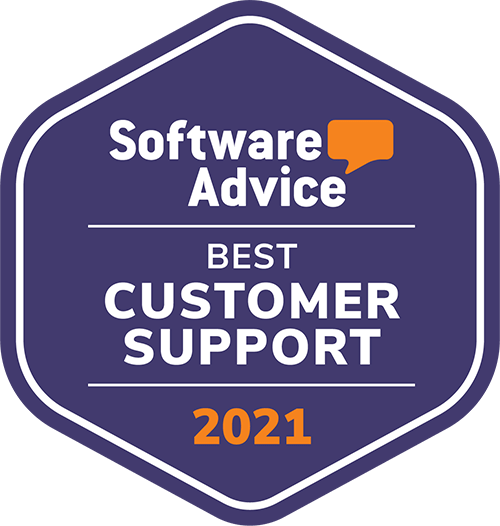It wasn’t a hard choice to select SmartSurvey. Not only did they understand what we were looking to achieve right from the start, they presented a solution that represented everything we needed.
How to Set Up an Employee Engagement Survey
How to Set Up an Employee Engagement Survey

Getting started with employee engagement
One of the most effective ways to increase employee engagement is to regularly solicit feedback from your teams.
According to a study from Salesforce, employees who feel that their voices are heard at work are nearly five times more likely to deliver their best performance.
An employee engagement survey is one of the best ways to do this, but you need to make sure you’re doing it right. With that in mind, we’ve put together a guide on everything you need to know when setting up an employee engagement survey:
- What type of survey should I run?
- What question formats work best?
- How to carry out an engagement survey
What type of survey should I run to measure engagement?
When you’re planning out your engagement strategy, you’ll want to get both feedback on how it’s going and updates on your initial questions as you go. This will allow you to track improvements but also to get a sense of what’s working, and what isn’t.
There are a number of different survey types you could consider, as you don’t necessarily want a long survey for each round of feedback. These are: employee survey and employee pulse survey.
A full employee survey
A full staff survey is something you only want to run once or twice a year. It’s what you’ll run at the beginning of your engagement strategy, so you can find out where you are currently at with the engagement in your business. After this initial survey, you can use the findings to benchmark your engagement, and then use this to track your progress.
You’ll want to make these full, more in-depth surveys, slightly less frequent. As crafting the questions, rolling out the communications and reviewing the data afterwards can be quite time consuming. This is why we’d advise running these either yearly or every 6 months.
You do, however, still want to keep up a regular flow of contact with your team, so you can gather feedback and keep tracking your progress. Which is where pulse surveys come in.
A quick employee pulse survey
Employee pulse surveys, which are much shorter than the traditional employee survey, can be a good example of a more regular method of obtaining essential feedback. We offer employee pulse surveys so you can get frequent feedback from your employees about their engagement. Find out more about implementing an employee pulse survey.
An employee pulse survey is a selection of quick questions aimed at getting a snapshot of your staff’s overall engagement and job satisfaction. Questions are generally shorter and easy to understand, with answering options that use multiple choice or the Likert scale.
Whether you’re conducting a full employee survey or a shorter employee pulse survey, you still need to be asking your employees the right questions to gain the best insights possible and measure employee engagement effectively. You can read more about the best questions to ask in an employee engagement survey here.
What question formats work best for engagement surveys?
The main purpose of your employee engagement survey questions is to deepen your understanding about what drives engagement within your organisation, whilst identifying any factors that could be holding it back.
By giving your employees a voice and the opportunity to share their suggestions and concerns, employee engagement surveys can allow managers to better track engagement levels and take any necessary actions to improve them. Ultimately, employee surveys help boost engagement levels and can provide greater clarity about how to move your company forward.
With this in mind, there are a handful of different question formats that you may want to use throughout your full surveys and your employee pulse surveys. Some of our questions are based on the Likert scale, where responses are measured against a scale, others are either open ended text fields or index based questions.
What is a Likert scale question?
You may be more familiar with the Likert scale than you first think. There’s a strong probability that you’ve answered a question using it in a survey or questionnaire that you’ve filled in yourself.
The Likert scale is used to measure people’s attitudes towards a subject. It’s usually done with a five point scale, although it can be done with seven points. Each point on the scale comes in rank order, which can be assigned a value. The best way to show this is with an example:
A typical example asks a series of questions and then gives you 5 ways to respond, such as ‘Strongly Agree’, ‘Agree’, ‘Undecided’, ‘Disagree’ and ‘Strongly Disagree’ or similar statements.
A Likert scale question gives people a quick way to give feedback, which is good for engagement. The results can also then be summarised with a mode. You can use these results to create graphs and check where everyone is at on key issues.
Open-ended questions for employee engagement surveys
An open ended question can be used to gather as much information as possible. While it’s harder to use for measuring and benchmarking, as it may not end up in a graph or table, it gives you a chance to find out key issues and hear directly from your employees.
Free text sections can be added to scaled questions too, as you can offer people the chance to feedback on the ‘why’ of their response on the scale.
How to carry out your employee engagement survey
To get going with your employee engagement strategy, before you start working on the best ideas and plans for engaging with your employees, you’re going to want to set up your first engagement survey. If you’ve never conducted an employee survey before, the following steps will get you started:
1. Measure where you currently stand
Before you do anything else, it’s essential to know where your company currently stands in terms of its engagement levels. You want to know the basic lay of the land so that you can create the most effective survey that will provide results you can use for your ongoing strategy.
You can do this quickly by collecting employee feedback to the following simple questions:
"On a scale of 1 to 10, how engaged do you think you are?"
"If you could, what’s the one thing that you would change about your job?"
"Would you change your job for higher pay?"
Although this is unlikely to give you the most detailed overview, it’s a good start, which will allow you to determine the general sentiments of your employees and enable you to begin work on setting clear objectives.
2. Get input from senior management
Next, you need to be communicating with senior and departmental managers about the current state of engagement. From here you need to involve them in the entire process, in order to determine how you will set about increasing employee engagement levels.
3. Set your goals
Work with your managers to establish some clear objectives about what you’re looking to achieve through running your employee engagement survey.
Potential objectives could include:
- Identifying ways of increasing employee engagement levels throughout the organisation
- Determining ways to improve employee retention
- Examining ways in which to improve your employee net promoter score (eNPS)
- Determining how to transform a poor company culture
Depending on where you currently stand and the biggest obstacles you’re facing, you need to decide on a set of clearly defined goals for your survey.
4. Develop an essential list of questions to ask every time
With your objectives firmly top of mind, create a list of closed and open-ended questions, which you will ask employees at regular intervals.
These could be anything from questions to obtain views about your managers and company culture, to questions that gauge opinion about opportunities for personal growth or which measure overall happiness.
We’ve put together our list of essential employee engagement questions, which will offer you a starting point. But remember, every business may have different challenges it needs to tackle, and your questions may change slightly.
5. Identify the best way to conduct your survey and share its details
How do you plan to send out your employee engagement survey?
While annual surveys are still popular, you may opt for more regular ‘pulsing’, or a mix of the two.
Once you’ve decided, you need to share these details with your employees. And once you’ve received their survey feedback, you’ll need to share it with all your staff and act on it by working with them to try to identify solutions, as this is the only way to truly foster an engaging environment.
We can help you understand your results and guide you through what to do with your engagement survey results.
How are we different?
UK based
Your data will be stored and processed here in the UK for your peace of mind.
Fanatical support
We pride ourselves on going above and beyond for our customers, providing expert advice and support whenever you need it.
You're in safe hands
Our secure platform and robust data protection measures ensure your data is safe and secure with us. We are ISO27001 and Cyber Essentials Plus certified.
We're human
We understand the importance of personal interaction, which is why we offer a human touch alongside our cutting-edge technology.
Accessibility matters
We're committed to making our surveys accessible to everyone, with a range of features to support those with disabilities.
Unlimited responses
With no limits on the number of responses you can collect, you can be sure your survey will reach as many people as possible without it being cost prohibitive.

Don’t just take our word for it
Over 500,000 users have registered to use SmartSurvey.


We couldn't be happier with SmartSurvey, we love its functionality and flexibility. This means we have been able to use one survey tool across many parts of the business.








Get in touch
We are ISO27001 certified, registered under the Data Protection Act and fully compliant with EU Privacy Laws.
Access to a knowledgeable account manager for personal assistance for when you most need it.
Our friendly design team is on hand to assist with any bespoke design and custom development requests.
We succeed if you succeed. Our goal is to help you carry out effective research and we’re here to help you achieve that.
